The 10 Hottest Google Cloud, Workspace Tools Of 2023 (So Far)
CRN breaks down the 10 hottest new Google Cloud and Workspace products launched in 2023 so far, with the majority based around AI.
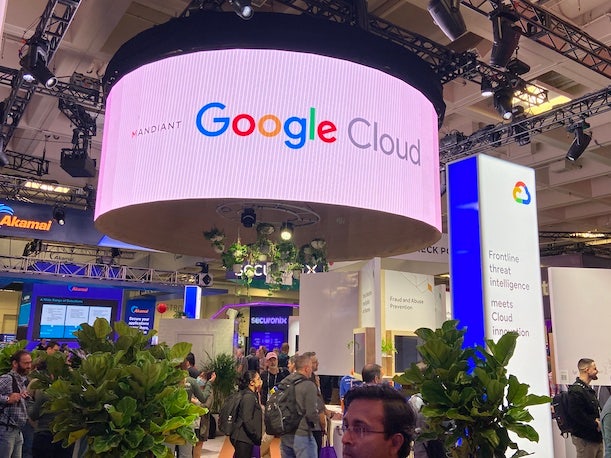
If Google Cloud’s innovation strategy in 2023 could be summed up in two words, it would be: artificial intelligence.
The nearly $30 billion Mountain View, Calif.-based cloud giant unleashed a slew of new AI and generative AI products, tools and services across its portfolio—spanning from Google Workspace to Vertex AI.
“Seven years into our journey as an AI-first company, we’re at an exciting inflection point,” said Google CEO Sundar Pichai in May. “We have an opportunity to make AI even more helpful for people, for businesses, for communities, for everyone. We’ve been applying AI to make our products radically more helpful for a while. With generative AI, we’re taking the next step.”
[Related: The 10 Coolest New AWS Tools Of 2023 (So Far)]
Google Cloud And Workspace AI
Although Google Cloud did enhance some of its flagship products this year, such as BigQuery, the vast majority of big new Google and Workspace tools came in the form of AI.
AI was top of mind for Google in 2023 for both Pichai and Google Cloud CEO Thomas Kurian, specifically around generative AI and Workspace.
“Developers and businesses can now try new APIs and products that make it easy, safe and scalable to start building with Google’s best AI models through Google Cloud and a new prototyping environment called MakerSuite,” said Kurian in March. “In Google Workspace, we’re introducing new features that help people harness the power of generative AI to create, connect and collaborate.”
CRN breaks down the 10 hottest Google Cloud and Workspace new tools launched in 2023 so far that are important for channel partners, customers and Google’s future in AI.
* Duet AI For Google Workspace
* Generative AI App Builder
* BigQuery Revamped
* Gmail Gets Generative AI
* Google MakerSuite
* PaLM API
* Built With Google Cloud AI
* Duet AI for Google Cloud
* Vertex AI
* RaMP Deck
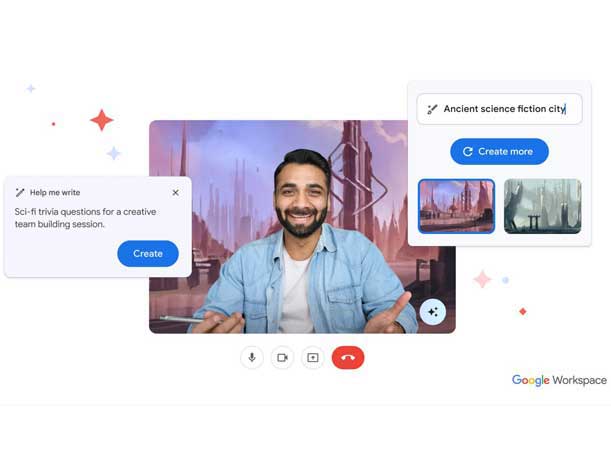
Duet AI For Google Workspace
One of the biggest launches from Google this year was Duet AI For Google Workspace, which brought together all of Google’s powerful generative AI features and lets users collaborate with AI so they can get more done every day.
Within Google Slides, the company embedded generative AI into Slides so users can easily create unique visuals with a few words.
For Sheets, Google’s new generative AI helps users analyze and act on data in Sheets, with automated data classification and the creation of custom tables.
Within Google Meet, Google’s new AI features enables users to express themselves better during video calls with custom backgrounds as well as capture notes in Meet.
Lastly, Google is integrating smart canvas capabilities, such as smart chips, into the new assisted writing experience inside Google Docs.
“These features help you write, help you organize, help you visualize, help you accelerate workflows, have richer meetings and much more,” said Aparna Pappu, general manager and vice president of Google Workspace, in a blog post.
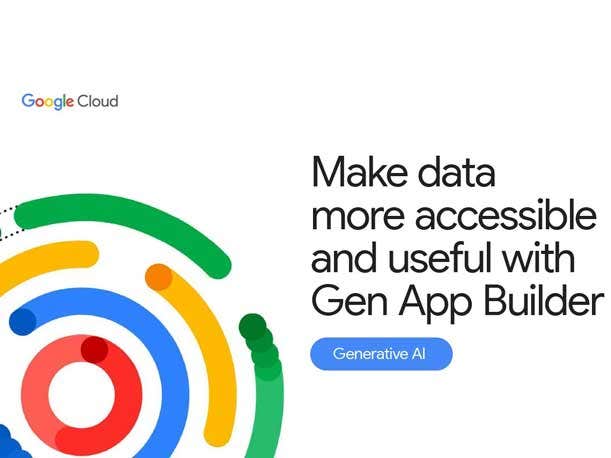
Generative AI App Builder
Google Cloud launched a new Generative AI App Builder in 2023, which Google says is now the fastest way for developers to jumpstart the creation of AI apps such as bots, chat apps, digital assistants and custom search engines, with limited technical expertise required.
Developers can have API access to Google’s foundation models and can use out-of-the-box templates to jumpstart the creation of AI gen applications in sometimes just a few minutes.
“Businesses and governments also want to build their own AI-powered chat interfaces and digital assistants,” said Google Cloud’s CEO Thomas Kurian earlier this year. “To enable this, we are introducing Generative AI App Builder, which connects conversational AI flows with out of the box search experiences and foundation models—helping companies build generative AI applications in minutes or hours.”
Generative AI App Builder gives users direct API access to foundation models and out-of-the-box templates for use cases such as search, support, product recommendations and discovery, and media creation.
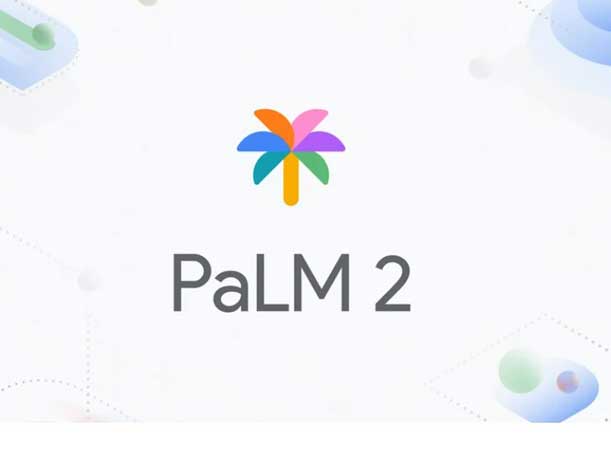
PaLM API; PaLM 2
Another huge AI launch from Google this year was the new PaLM API developer offering aimed at making it easier and safer to experiment with Google’s large language models.
The PaLM API can be used for a variety of applications and provides access to models that are optimized for multi-turn use cases— such as content generation and chat, and general purpose models for areas such as summarization and classification.
With embeddings generated through the PaLM API, developers can build applications with their own data or on top of external data sources. Embeddings can also be used in downstream applications built with TensorFlow, Keras, JAX, and other open-source libraries.
In May, Google launched PaLM 2 that offers stronger models in logic and reasoning thanks to better training on scientific and mathematical intelligence.
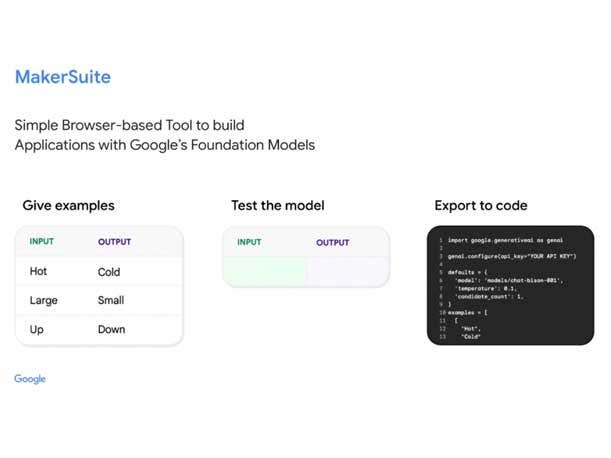
Google MakerSuite
Alongside the new PaLM API, the company released a tool that lets developers start prototyping quickly: Google MakerSuite.
The new prototyping tool Google MakerSuite enables users to iterate on prompts, augment dataset with synthetic data, and easily tune custom models. When users are ready to move to code, MakerSuite will let users export their prompt as code in languages and frameworks such as Python and Node.js. Google’s infrastructure supports MakerSuite so users don’t have to worry about hosting or serving.
“Our tooling will enable developers to leverage parameter-efficient tuning techniques to create models customized to their use case. And with MakerSuite, you’ll be able to quickly test and iterate on your tuned model right in the browser,” said Scott Huffman, vice president of engineering at Google, in a blog post this year.
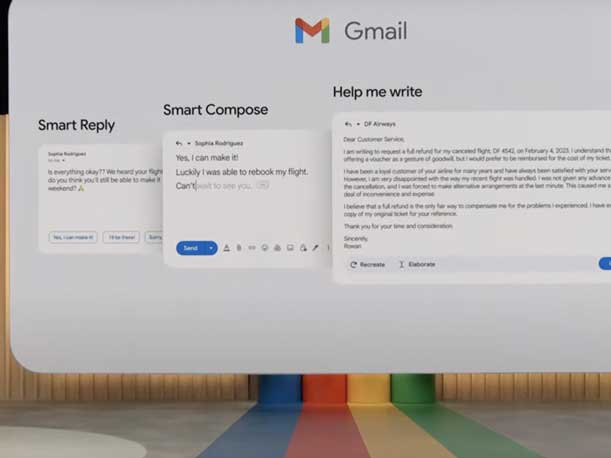
Gmail Gets New Generative AI
This year, Google said it’s now possible for Workspace users to harness the power of generative AI to create, connect and collaborate like never before when using Gmail.
In March, the company introduced its first set of AI-powered writing features in Google Docs and Gmail.
“In Gmail and Google Docs, you can simply type in a topic you’d like to write about, and a draft will be instantly generated for you,” said Google Cloud CEO Kurian. “So if you’re a manager onboarding a new employee, Workspace saves you the time and effort involved in writing that first welcome mail. From there, you can elaborate upon or abbreviate the message or adjust the tone to be more playful or professional — all in just a few clicks.”
The new embedded generative AI in Gmail will help users write anything—from job descriptions to drafting invitations to events—with users only having to type in the topic they want Workspace to write about.
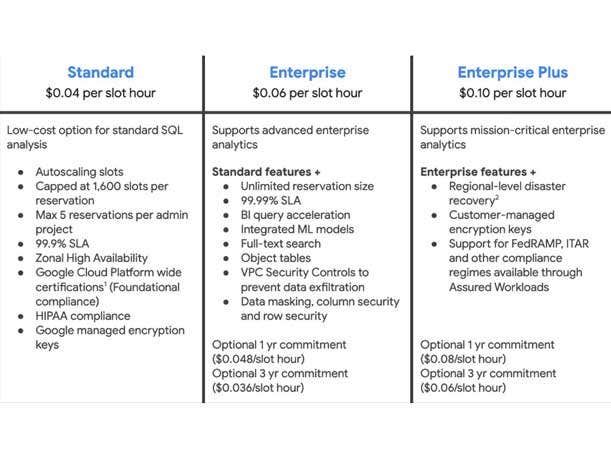
BigQuery Revamped
Throughout 2023, Google has added new features and capabilities to its popular BigQuery serverless data warehouse solution.
For example, BigQuery’s new change data capture (CDC) capability provides a method of processing and applying streamed UPSERT and DELETE operations directly into BigQuery tables in real time through the BigQuery Storage Write API. The feature enables real-time replication of more classically transactional systems into BigQuery, which empowers cross functional analytics between online analytical and transaction processing.
Google also introduced this year BigQuery differential privacy, which are SQL building blocks that analysts and data scientists can use to anonymize their data. The launch adds differential privacy to Google SQL for BigQuery. Differential privacy is technique that limits the personal information that is revealed by an output.
Lastly, Google Cloud’s data capture and replication service, Datastream, became generally available for BigQuery. The joint solution offerings a seamless experience that enables near-real time insights in BigQuery with just a few steps.

Google’s New RaMP Deck
Google Cloud made its biggest investment ever to accelerate cloud migrations by launching in 2023 a new Rapid Migration Program that unleashed all of Google’s products, programs and engagement models into a unified program.
Regarding new Google Cloud tools within the program, the company developed a new RaMP Deck that closely tracks large-scale migrations, similar to a workbench.
“We’ve developed a RaMP Deck Google sheet to use as a single source of truth between our customers, partners and account teams to make sure we’re employing the correct best practices,” Stephen Orban, Google Cloud’s vice president of migrations, told CRN this year.
“We’re creating great governance patterns to create consistency in how our customers and partners are developing their business cases, developing OKRs [objectives and key results], developing their training plans, making sure their cloud teams are leveraging the best practices that we’ve seen work with other customers, and are meeting on a regular basis to run that down with the customer,” said Orban. “The RaMP Deck tracks what those OKRs are, what is our progress against them, any kind of risks we have that are blocking progress, what are the things that we’ve learned, and then reviewing that with our customers and partners on a regular basis to make sure things are staying on track.”
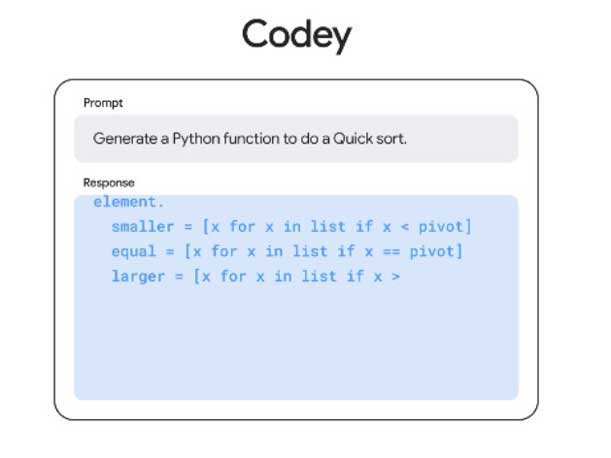
Vertex AI Injected With Generative AI
In keeping the generative AI innovation engine strong in 2023, Google Cloud enabled generative AI support for Vertex AI, which is the company’s machine learning platform for training and deploying ML models and AI applications.
The new features provide teams access to foundation models from Google and others, letting users build and customize atop these models on the same platform they use for homegrown ML models and MLOps.
Google unveiled three new foundation models available in Vertex AI, where they can be accessed via API, tuned through a simple UI in Generative AI Studio, or deployed to a data science notebook. The three new foundation models are: Codey, Imagen and Chirp.
Additionally, Google added another AI capability— New Reinforcement Learning from Human Feedback (RLHF)—to Vertext AI.
RLHF extends Vertex AI’s tuning and prompt design capabilities by letting organizations incorporate human feedback to customize and improve model performance. Google said Vertex AI is the first end-to-end machine learning platform among the cloud hyperscalers to offer RLHF as a managed service offering, helping organizations to cost-efficiently maintain model performance over time and deploy safer and more useful models to production.
Finally, Google also embedded APIs for text and images into Vertex AI to help developers build recommendation engines, classifiers, question-answering systems, and other sophisticated applications based on understanding of text or images.

Duet AI for Google Cloud
Duet AI for Google Cloud brought together all of Google’s generative AI features and lets users collaborate with AI so they can get more done every day.
Duet AI serves as an expert pair programmer and assists cloud users with contextual code completion, offering suggestions tuned to a customer’s code base, generating entire functions in real time, and assisting with code reviews and inspections.
Duet AI for Google Cloud aims to fundamentally transform the way cloud users of all skill sets build new experiences and is embedded across Google Cloud interfaces—within the integrated development environment (IDE), Google Cloud Console, and even chat.
“With Duet AI, we’re on a mission to deliver a new cloud experience that’s personalized and intent-driven, and can deeply understand your environment to assist you in building secure, scalable applications, while providing expert guidance,” said Michael Weingartner, vice president and general manager of Google’s Cloud Application Ecosystem in a blog post.
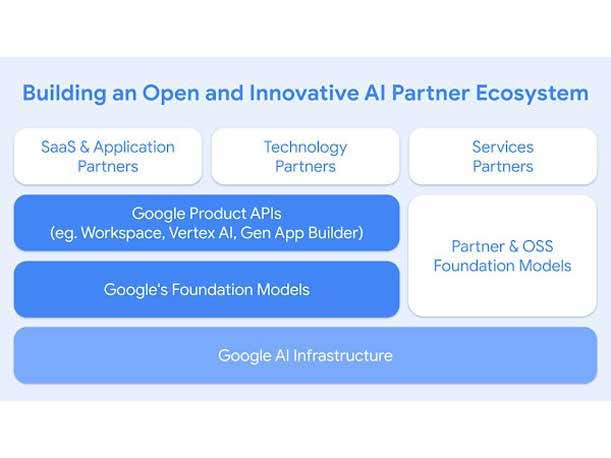
Built With Google Cloud AI Program
In addition to all of Google Cloud’s new AI innovation, the company launched a new partner program in 2023 called ‘Built with Google Cloud AI’ that helps partners start building applications using Google Cloud’s AI services.
“It involves deep technical enablement of our partners,” Kevin Ichhpurani, corporate vice president, Global Ecosystem and Channels at Google Cloud told CRN this year. “We have a lot of software companies and services firms that are building IP and building unique repeatable solutions. For example, if you’re a bank and want to build up a personal financial assistant for a bank—that could be a repeatable solution.”
Built with Google Cloud AI grants partners access to Google AI and machine learning experts who assist in the use of APIs, reference architectures as well as building apps.
“We have access to partner engineers and core Google engineers to actually help you on that journey and hand-hold you through that entire journey—from not only knowing the platform, but even helping with your initial customers,” he said. “We also have financial incentives, credits, developer sandboxes and so forth.”